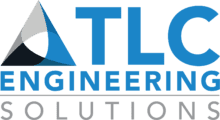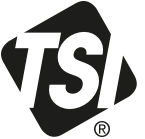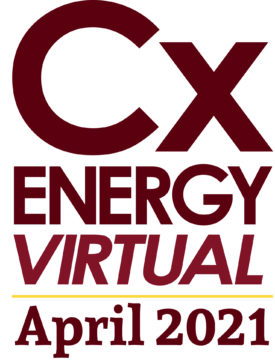
![]()
CxEnergy technical presentations are approved for the following Continuing Education programs: AIA (LU), USGBC LEED General Education CE, ACG Certified CxAs, EMA certified EMPs, and AABC Certified TBEs & TBTs. In addition, most state PE programs accept AIA-approved LUs, check your local board to confirm.
The pre-recorded sessions will be available for viewing by April 29th, the last day of the conference.
Here are a few additional things you should know before you go… online!

RCx in Healthcare – Preparing Facilities for the Next Generation of Care
Joe Moroni, CxA, MBA, ECG Management Consultants.
The healthcare environment is requiring providers to adapt assets to changing demands and build in flexible use. Patients are seeking better care closer to home, and following the COVID-19 pandemic, health systems—having realized financial losses due to lost elective volumes– must improve their income, enhance clinical service portfolio, and meet rapidly evolving patient demands. From a facilities perspective this means that:
(1) new facilities will be built with greater flexibility in mind, and
(2) existing facilities will need to be thoughtfully modified to flex with changes in demand and alternative use. RCx offers a solution by reassessing assets within this context, identifying and prioritizing areas in need of change or repair, and scoring assets on their ability to meet new standards.
This presentation will review healthcare trends, vectored by COVID-19, and then focus on specific examples where RCx can enhance facility adaptability and use. A methodology will be presented to analyze current operations, refresh facility standards and procedures, and coordinate with a healthcare client’s leadership to coalesce on recommendations for implementation. Examples include converting medical office space into clinical diagnostic/testing and procedural space, preparing ambulatory surgery centers to meet the demands of new and expending service lines and procedures (i.e., cardiovascular catheterization), and identifying changes needed to accommodate expanding telehealth.
Learning Objective 1:
Learn about evolving trends in healthcare volumes and patient demands
Learning Objective 2:
Adapt volume trends to flexing facility and space needs
Learning Objective 3:
Learn how RCx can enhance a client’s understanding of their asset capabilities
Learning Objective 4:
Understand how to communicate facility needs in healthcare terms

Cx of Fast Track COVID-19 Alternative Care Facility (ACF)
Ryan McClain, PE, CxA, CEM, CMVP, LEED AP, Pinnacle Energy Services, Inc.
Early 2020 computer pandemic models projected exponential COVID-19 case growth triggering an emergency need for isolation rooms to meet the anticipated demand. Along with other similar projects, federal funding was established to create 116 COVID-19 isolation spaces in a 13-day window with the directive that spaces meet NFPA 99, Category 2 “plus” criteria but that otherwise, did not have to satisfy other typical code requirements for licensed beds under certain emergency provisions afforded by law established through the U.S. Dept. of Health & Human Services. The US Army Corps of Engineers, was tasked with managing the project and, after surveying numerous sites, identified 85ksf of space within The Oklahoma State University Hospital in Tulsa for the implementation. The designated area was composed of old inpatient care rooms that had “re-permited” as office occupancy in recent times and the older infrastructure not only fell short of current codes but had suffered system performance “drift” over time as well.
This all created a unique Cx scenario where project stakeholders had to navigate safety, cost, technical feasibility and professional liability hurdles all under the intense pressure of a 13-day turn-key schedule hard stopped by a liquidated damages clause. The case study addresses the unique considerations of how to approach delivering best-practice Cx services in the context of a fast-track, large-scale, federally-managed COVID-19 project amidst the intriguing scenario where even typical code-required provisions are being negotiated in near-real-time.
Learning Objective 1:
Learn techniques for delivering Cx services on fast-track projects.
Learning Objective 2:
Learn how to manage risk on projects on mission-critical applications involving trade-offs between life-safety, cost, schedule and technical feasibility.
Learning Objective 3:
Learn how to defend best-practice Cx norms and standards even when projects go far “off-script”.
Learning Objective 4:
Learn techniques for negotiating and managing the Cx of existing systems that interface with new infrastructure.
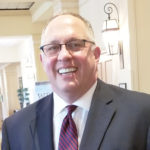
VFD Motors: Shaft Voltage Causes and Effects and Solutions
Tom Hedrick, PE, CxA, EMP, LEED AP, International Commissioning Engineers
Presentation will focus on the shaft voltage that is induced via Variable Frequency Drives, the main causes of the induced voltages, magnitude of the problems and possible solutions to this issue that reduces the life expectancy for VFD motors. Presentation is supported by peer reviewed research, field testing and performance based solutions. Included in the presentation will be case study measurements, documentation and analysis. Audience will walk away with information on how to prevent damaging shaft voltage on bearings and motor in order to reduce maintenance issues and capital cost expenditures.
Learning Objective 1:
Identify causes of damaging shaft voltage in VFD motor applications
Learning Objective 2:
Identify Methods to Measure Shaft Voltage in the field
Learning Objective 3:
Identify possible solutions to mitigate shaft voltage and extend expected life of VFD motors
Learning Objective 4:
Determine proper language to include in Design Standards / Specifications for future projects
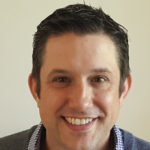
Automated Functional Performance Testing Is a Thing?
Derek McGarry, PE, LEED AP, OTTO (by HP Buildings)
For any commissioning project, multiple professionals end up spending a significant amount of time executing and observing Functional Performance Tests on HVAC equipment. This presentation will explore how technology now enables bots and algorithms to automatically execute testing overrides through the BAS, record trend data, and automatically answer functional questions. This session will draw from multiple recent examples where the Cx Provider deployed Automated Functional Performance Testing. Specific examples from the collaborations will be used to demonstrate how automated FPT can help lower project costs and deliver high quality results.
Learning Objective 1:
To understand what Automated Functional Performance Testing is.
Learning Objective 2:
To learn what project requirements are necessary to enable Automated Functional Performance Testing.
Learning Objective 3:
To understand how Automated Functional Performance Testing impacts the Commissioning Provider.
Learning Objective 4:
To understand the capabilities (and limitations) of Automated Functional Performance Testing.

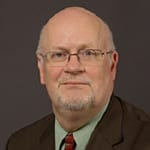
Codes, Standards and Guidelines – Defining Cx Scope and Deliverables
Jim Magee, CxA, EMP, Facility Commissioning Group
Bob Knoedler, PE, CxA, EMP, Hanson Professional Services, Inc
As commissioning continues to be addressed in more codes, standards, guidelines and sustainability programs, (all updated on periodic schedules), Cx Providers need to be aware of the associated tasks, documentation and deliverables required by same within the sectors and jurisdictions they practice.
Several organizations have created their own guides and requirements for commissioning, including: ASHRAE, ASHE (for Health Facilities), General Services Administration (GSA), Veterans Administration (VA), and the Department of Defense (Unified Facilities Criteria). Recognizing the impact commissioning has on the performance of energy-using systems, many energy codes and standards have incorporated Cx requirements into their requirements, including the International Energy Conservation Code and ASHRAE 90.1. Sustainability programs, like LEED and Green Globes, also require commissioning, recognizing its importance in environmental stewardship and energy efficiency.
State codes and local jurisdictions have various schedules for code review and adoption; often resulting in different versions of a given code currently active, often with amendments. This session will review some of the differing Cx requirements currently incorporated (or adopted by reference) within current codes and standards, and some of the efforts by Cx organizations toward reconciling / standardizing these requirements.
Learning Objective 1:
Be aware of the general tasks, documentations, and deliverables required by codes, standards, guidelines and sustainability programs.
Learning Objective 2:
Learn which energy codes and standards have incorporated Cx requirements into their requirements.
Learning Objective 3:
Recognize and understand the impact commissioning has on the performance of energy-using systems.
Learning Objective 4:
Understand how some of the Cx requirements currently incorporated within current codes and standards differ.


Commissioning Integrated Low Voltage Systems in Healthcare

Kevin O’Brien, CxA, RTPM, SSRCx
Healthcare low voltage systems are increasingly complex, requiring levels of cross-system integration that can prove difficult to verify in the field. Modern Fire Alarm, Access Control, Nurse Call and Infant Abduction systems often communicate and cooperate to protect patients and Owners alike. A Commissioning Authority‘s understanding of these systems and how they interact can often make (or break) a successful low voltage Commissioning Plan, and can be the difference between an exceptional Client relationship and simply a good one.
Learning Objective 1:
To understand common basic system configurations and typical testing protocols for low voltage systems.
Learning Objective 2:
To advocate for the Client’s needs and unique considerations during commissioning of low voltage systems.
Learning Objective 3:
To understand common coordination difficulties that are unique to commissioning multiple integrated systems.
Learning Objective 4:
To become familiar with common low voltage system issues and strategies to mitigate their effect on the commissioning process.

Commissioning, Operations and Maintenance – A Beautiful Relationship?
Michael Talbot, PE, CxA, FASHRAE, LEED AP, Apogee Consulting Group
A successful commissioning/retro commissioning process ensures not only that a building operates as the Owner intended but the building staff are prepared to operate and maintain the systems and equipment as intended. This process can ONLY be successful with proper input from the O&M staff. The root cause of why buildings do not function as intended can be traced to miscommunication or non-communication with the O&M staff prior too or during the commissioning process. The power point presentation will describe how to go through an O&M assessment during the commissioning process to achieve a “Quality” operation and maintenance program. It will also describe how commissioning and retro commissioning establish the performance objectives for the O&M staff.
Learning Objective 1:
Understand the differences between building maintenance and commissioning.
Learning Objective 2:
How to maintain building performance after the commissioning process has ended.
Learning Objective 3:
Understand the important roles that the O and M staff have during the commissioning process.
Learning Objective 4:
Review the O and M “best practices” for energy efficient buildings.

Commissioning the Suntrust (now Truist) Park
Darren Draper, PE, CxA, LEED AP, Epsten Group
A look into the commissioning of one of our favorite new ballparks, and a peek ahead to automated functional performance testing.
It’s our favorite time of year, and we’re going “back-back-back-back-back” to look at the commissioning of Suntrust (now Truist) Park with Darren Draper, CxA from the Epsten Group. Darren will walk us through the project and provide tips, tricks, and lessons learned for commissioning stadiums. Also, the Epsten Group has recently been experimenting with automated functional performance testing, so he will share some early insights on this topic as well.
Learning Objective 1:
Understand the unique characteristics of Truist Park with a focus on building systems.
Learning Objective 2:
Understand the nature of commissioning of a professional ballpark on a compressed schedule.
Learning Objective 3:
Understand the integrated commissioning approach for Truist Park.
Learning Objective 4:
Understand the concept of automated functional testing and associated benefits.
Presented By


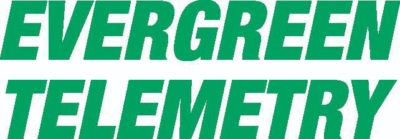

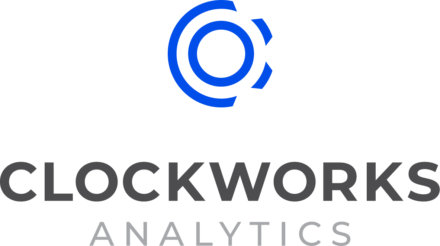





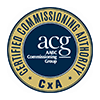 CxA certification is open to independent industry professionals who meet all education and experience prerequisites and implement commissioning processes in new and existing buildings.
CxA certification is open to independent industry professionals who meet all education and experience prerequisites and implement commissioning processes in new and existing buildings. The Energy Management Process Seminar is designed to help candidates understand the energy management process and how it can be applied and serves as the final preparation for the Energy Management Professional (EMP) exam.
The Energy Management Process Seminar is designed to help candidates understand the energy management process and how it can be applied and serves as the final preparation for the Energy Management Professional (EMP) exam.

